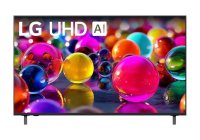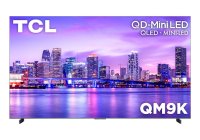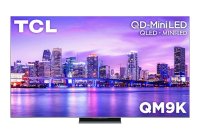Why Is There No Audio When Streaming Games to a TV?
Streaming games to your TV is a great way to enjoy immersive gaming experiences, but nothing ruins the fun like an issue with no audio. If you're experiencing this problem, it can be quite frustrating, especially if the game visuals are perfect but there’s no sound to accompany them. Fortunately, the issue is usually fixable with some simple troubleshooting.
Here’s a guide to help you identify why there is no audio when streaming games to your TV and how to fix it.
Common Reasons for No Audio When Streaming Games
Incorrect Audio Output Settings
One of the most common causes of no audio while streaming games is an incorrect audio output setting on either your TV or the gaming device. The device may be set to output audio to the wrong speakers or a disconnected device.
HDMI Cable or Connection Issues
If you're using an HDMI cable to stream games from your console, PC, or streaming device, the cable or connection could be faulty, which can lead to a loss of audio.
Muted or Low Volume Settings
Sometimes, the issue is simply that the volume has been muted or set too low. While it seems simple, this is a common cause of no sound.
Audio Format Compatibility
Certain gaming consoles or streaming devices might output sound in a format that is not supported by your TV or audio system. This can cause the sound to not play correctly.
Bluetooth Audio Problems
If you are using Bluetooth headphones or speakers for audio, connectivity issues, range problems, or interference can cause audio to cut out or not play at all.
Software or Firmware Glitches
A bug or glitch in the software of either your console, TV, or streaming device could be causing the audio to fail when streaming games. This might happen after updates or new game installations.
TV Audio Settings
Your TV might be set to an incorrect audio mode that isn’t compatible with the game stream. Some TVs have advanced sound settings that can impact how audio is handled.
Issues with Streaming Services
If you’re using a cloud gaming service (like Google Stadia, NVIDIA GeForce Now, or Xbox Cloud Gaming), there may be issues with the service itself, such as server problems or connection issues, that can affect audio output.
How to Fix No Audio When Streaming Games
1. Check Audio Output Settings
On the TV:
Go to the Audio Settings or Sound Settings in the TV’s menu.
Ensure the Audio Output is set to the correct device (internal speakers, external speakers, HDMI, or optical output).
On the Gaming Console:
For consoles like Xbox, PlayStation, or Nintendo Switch, check the Audio Settings in the system menu. Make sure the audio is set to HDMI Audio Out if you’re using an HDMI connection.
On a PC:
Open the Sound Settings in your computer’s Control Panel or System Preferences.
Ensure the correct output device (such as the TV or external speakers) is selected as the default audio device.
2. Inspect HDMI Cables and Connections
Check that the HDMI cable is properly connected to both the gaming console (or PC) and the TV. If the cable is loose or damaged, it could result in a loss of audio or video.
Try using a different HDMI cable or port on the TV to see if the issue persists.
Ensure the HDMI port on both the TV and the gaming device supports HDMI Audio Return Channel (ARC) if you're using a soundbar or external speakers.
3. Ensure Volume Isn’t Muted or Too Low
Check the volume on both the TV and the gaming console. Sometimes, the game audio is muted by accident.
Unmute both the game and your TV to ensure you’re not missing sound because of this simple oversight.
4. Check Audio Format Compatibility
If you have an advanced sound system (like Dolby Atmos or DTS), check that your TV and gaming console support the audio format the game is outputting.
On your console or streaming device, go to the Audio Settings and make sure the format is set to Stereo or Dolby Digital depending on what your TV or audio system supports.
If you're using a soundbar or external audio system, ensure it is configured to accept the appropriate audio format.
5. Restart Devices and Update Software
Restart your TV, gaming device, or streaming platform to refresh the audio settings.
Ensure that your gaming device, TV, and any connected audio equipment (such as soundbars or speakers) have the latest firmware or software updates. This can resolve bugs or compatibility issues.
6. Check for Bluetooth Audio Issues
If you are using Bluetooth headphones or speakers, check the Bluetooth connection on both the TV and the audio device.
Ensure that the devices are within range and that there are no Bluetooth pairing issues.
Try disconnecting and reconnecting the Bluetooth device to see if it resolves the issue.
Consider using wired headphones or speakers to rule out Bluetooth connectivity as the problem.
7. Adjust TV Audio Mode
Some TVs have special audio modes (like Surround Sound, DTS, Dolby Digital, etc.) that can affect how audio is output. Go to the Audio Settings and change the mode to Standard or Stereo.
Turn off any special audio enhancement features temporarily to check if they are causing the issue.
8. Test with Different Streaming Services or Games
If you’re using a cloud gaming service, test other games or services to see if the issue persists.
If the problem is only happening with one game or service, there may be an issue with that specific platform or game.
Try using a different game or streaming service to confirm if the issue is specific to one platform or is a broader problem.
Conclusion
No audio when streaming games to your TV is a common issue that can usually be fixed with a few simple steps. Start by checking the audio output settings on both the TV and the gaming device, ensuring cables are secure, and verifying that your devices are running the latest software. If the problem is with Bluetooth or streaming services, troubleshooting those specific areas can also help. By systematically following these steps, you should be able to resolve the issue and get back to enjoying your games with full audio. If the issue persists, it may be worth reaching out to customer support for your gaming device or TV for more advanced assistance.



